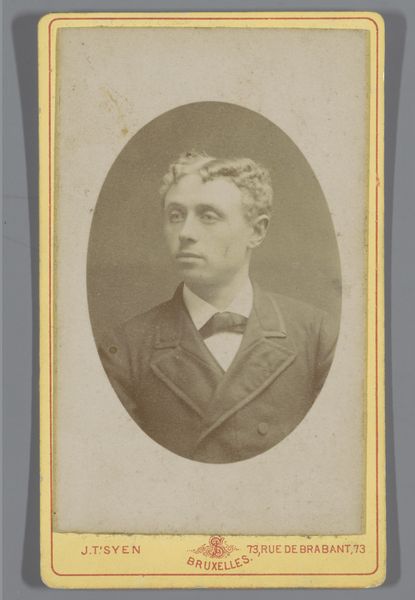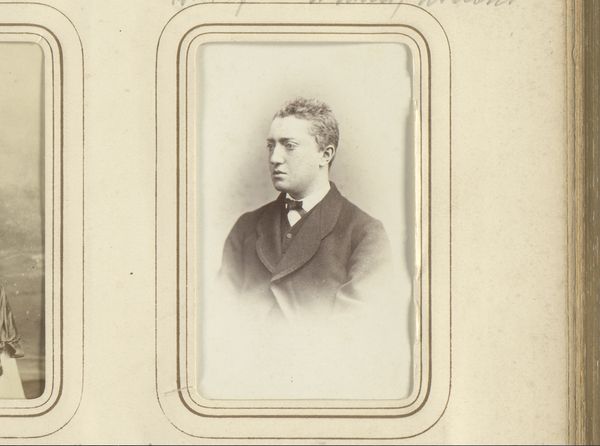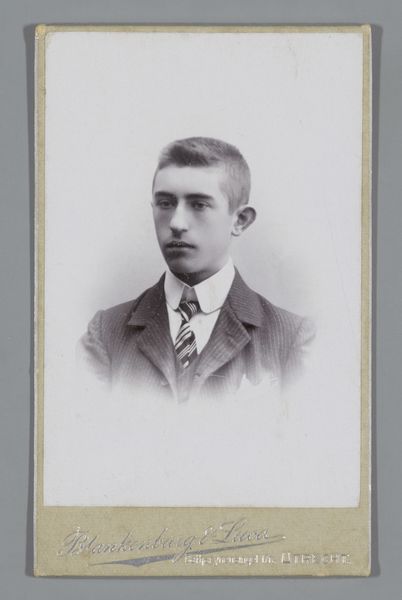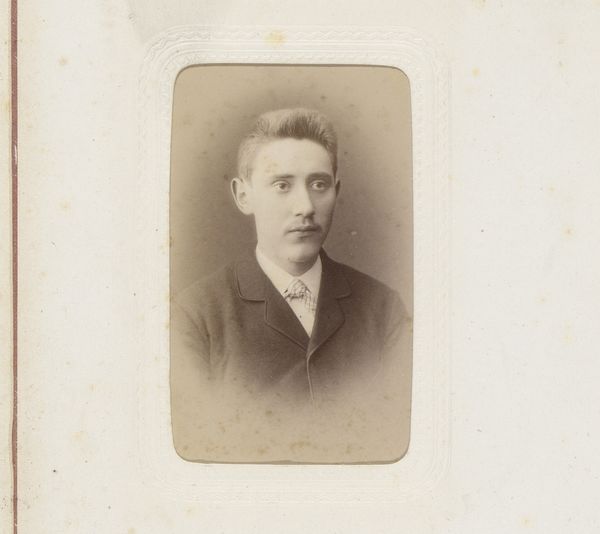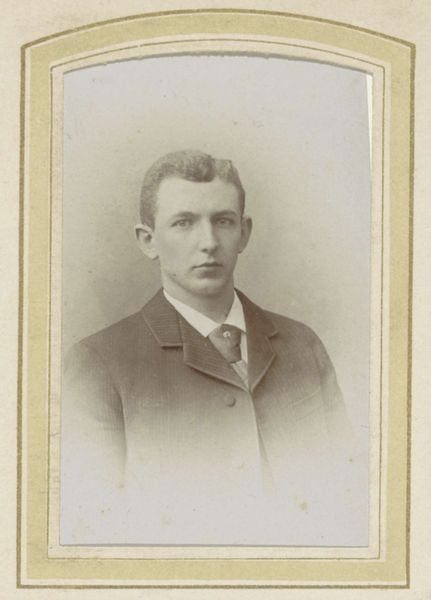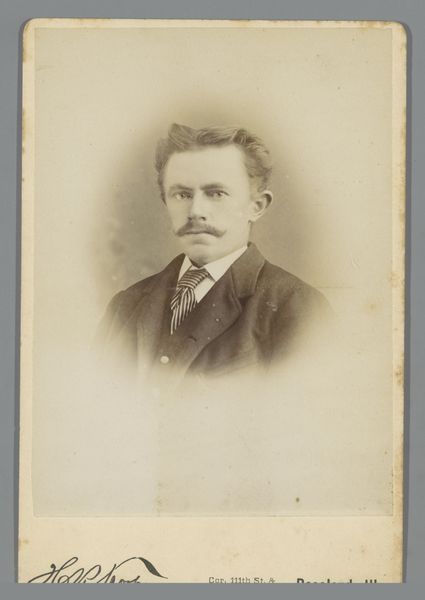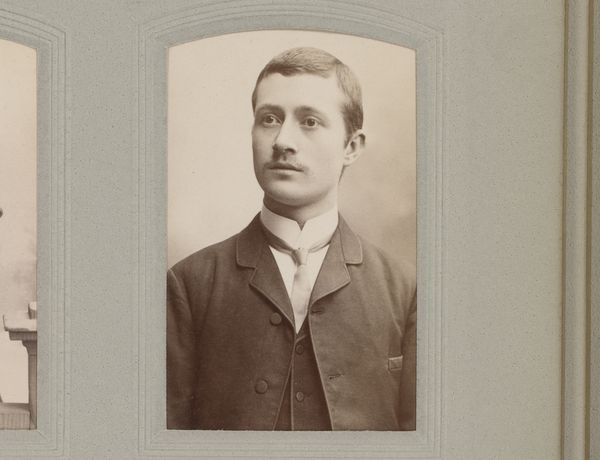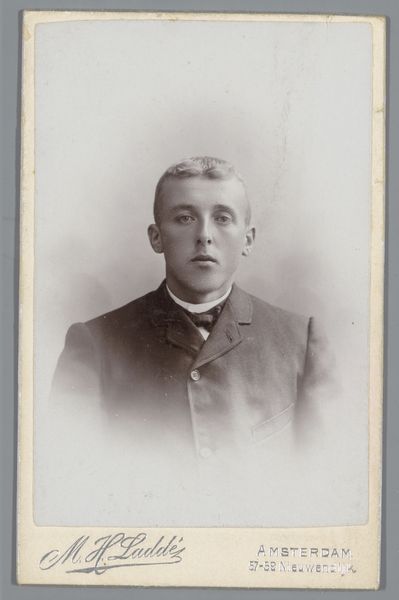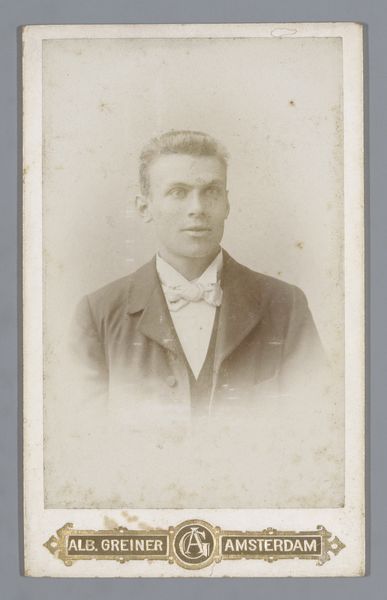
photography, gelatin-silver-print
#
portrait
#
photography
#
gelatin-silver-print
#
genre-painting
#
realism
Dimensions: height 98 mm, width 60 mm
Copyright: Rijks Museum: Open Domain
Editor: Here we have "Portrait of an Unknown Young Man," taken between 1865 and 1879, by Achille D'Orsi. It's a gelatin-silver print, so a photographic print. There's something very still and composed about it. What strikes you most when you look at it? Curator: I'm immediately drawn to the materiality. Think about the silver mined, processed, and then expertly applied to create this image. It speaks volumes about industrial development, labor, and the evolving role of photography as a commodity, almost a replacement of painting for certain strata in society. How does its status as a mass-produced object challenge our notion of the unique art object? Editor: That's a really interesting way to look at it, I hadn't considered photography as a mass-produced object in that era. I suppose I was still thinking of portraiture as a high art form, rendered in paint. Does focusing on materials change our view of portraiture? Curator: Absolutely! Analyzing the materials and their origins roots this "portrait" in a specific economic and social system. The cost and accessibility of gelatin-silver prints in this era define who could afford such a portrayal, who was excluded, and how social identities were constructed and affirmed. Does the sitter’s formal wear seem less individual now? Editor: Definitely. I see the access to formalwear as another layer of material wealth that helped construct his identity. The photo feels less about "him" and more about his place within a system of production. Curator: Precisely. We move away from notions of inherent genius or artistic vision toward a critical understanding of the power structures and economic forces at play. Editor: That really shifts my understanding of the artwork. I thought the portrait was an attempt to capture a specific person's identity, but looking at it through the lens of material and labour really makes it seem like a documentation of a particular system. Curator: Exactly, and by analyzing the physical making, we connect it to a far wider story of its time.
Comments
No comments
Be the first to comment and join the conversation on the ultimate creative platform.

